SPUR Talk: Cleaning Up the Civic Center Commons
4:42 PM PST on February 9, 2017
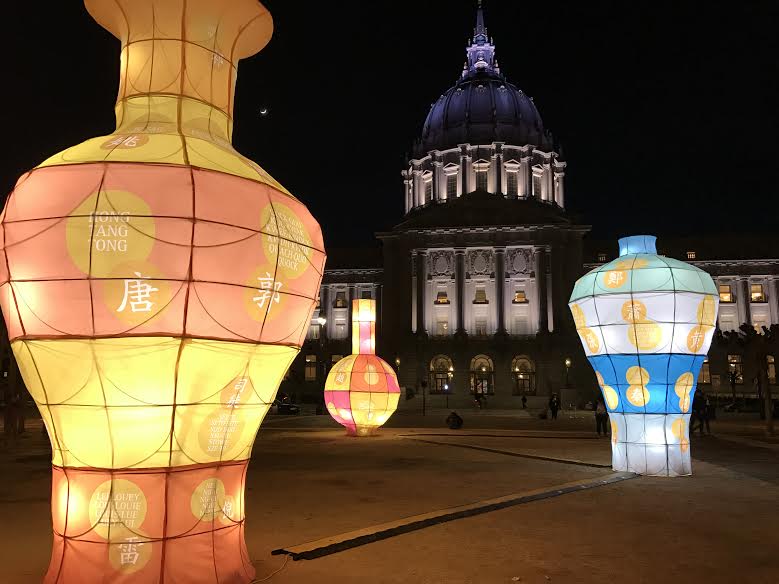
The SPUR panel explained that art, such as these lanterns, are just part of what they’ve done to revitalize Civic Center Commons. Photo: Streetsblog
Yesterday afternoon, representatives from the city, charity groups, and the Exploratorium, gave a presentation at SPUR's downtown San Francisco center about their collaborative efforts to clean up the Civic Center Commons/UN Plaza area and make it into an attractive and inviting urban forum, while helping the homeless and drug addicts who congregate there.
This is no small order. The area, which stretches between Civic Center BART and City Hall, has long been a place full of litter, with drug deals and use going on in the open. "When I [first] got down there, there was a guy shooting [a hypodermic needle] in his neck," said Randy Carter, with Hunters Point Family, a charity that works with at-risk youths. "There were drug dealers everywhere. And then drug dealers came and approached me, asking what are you doing here? Who are you? What is your job?"
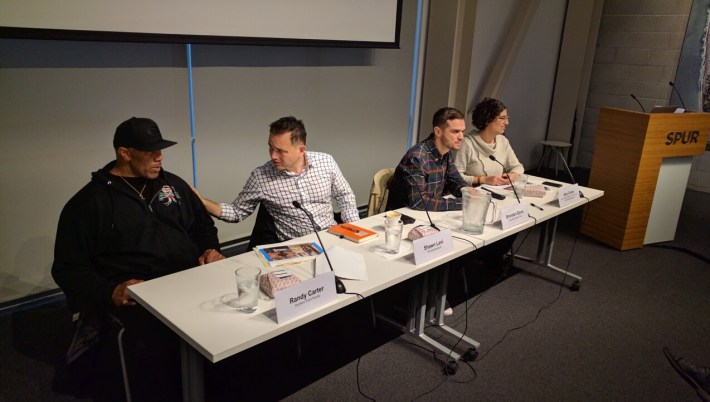
Amy Cohen, with the San Francisco Office of Economic and Workforce Development, said her department wanted to coordinate different charities and city agencies to start making Civic Center Commons into someplace people would feel safe bringing their children. "A year ago we had city department heads from Rec and Park, Public Works... Sam Dodge from the Department of Homelessness & Supportive Housing. We were slowly gearing up the city departments to increase attention to that space," explained Cohen. "Everyone’s been trying to solve the problems in a non-coordinated way… for example, the police would chase a bad guy into the BART station, and the BART police chased him back out." She set out to get different agencies talking with one another.
Cohen said the one good thing was there was never a problem making the space available for political demonstrations, noting that "...these days, it seems like every day there’s a protest." But the goal was to make people still feel safe exploring the area and wandering through it during off hours. They approached the challenge in several different ways--by cleaning up, helping the homeless and drug addicted, and activating the spaces with art.
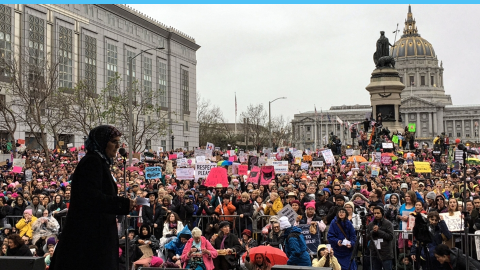
Shawn Lani of the Exploratorium, meanwhile, was called on to figure out art displays to activate the space. He recalled a comment someone made to him when he first decided to attack the challenge: "Civic Center is where good ideas come to die." His reaction was "We have to do it here!" Lani explained that they looked at the unused spaces, observing that most people seemed to rush through in fear. He wondered, "can we offer something with a sense of solace? We settled on the notion of sound as a great way of filling a space on a budget." These ideas eventually materialized into the "Sound Commons," which are a series of art displays including the ""Tick Tock Walk," and "Chime Time," where visitors can stop and play public instruments.
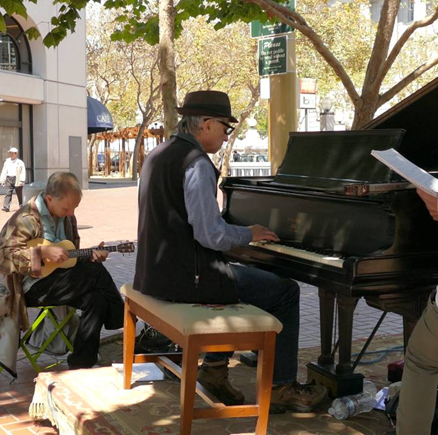
But people aren't going to stop and play an instrument that's surrounded by syringes. "When we first got there there were needles everywhere, the addicts would bury them in the dirt...buried them on the side of the ramps," explained Carter. "Every morning we’d have to check every installation to make sure there’s no needles." His group also had to clean up feces. But cleaning up offered another opportunity--to provide jobs and a sense of pride for the homeless. "We are helping homeless people rebuild their lives through the dignity of work," he explained.
Many are now moving into transitional housing and finding full-time jobs. "If you’re homeless the only place you have is the public space, and here they are beautifying it," said Brandon Davis of Downtown Streets Team, another charity involved in the effort. Davis said if you just give someone housing, without a job, and something to take pride in, they fall back into drug abuse and depression. "Folks are volunteering their time, in exchange for basic needs and entering an employment pipeline."
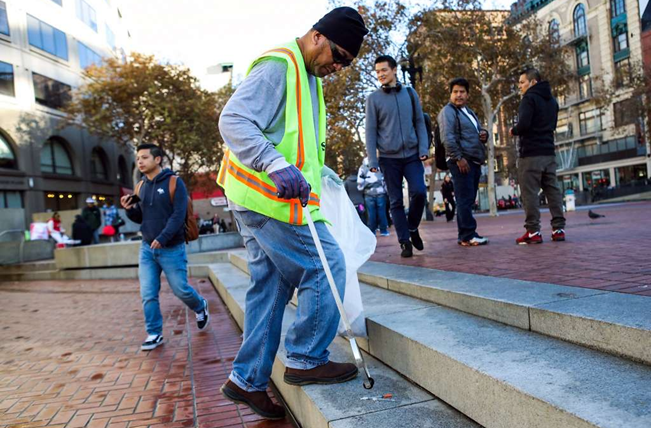
And what about the drug dealers? Carter said he wasn't sure how to approach the problem at first, but one day he just approached an addict, and treated him like a human being. "I apologize for interrupting your use, but do you mind stepping to the side because we have kids and families?" said Carter. "Surprisingly, addicts would apologize and stop, and say 'I didn’t know kids were coming here' and they leave." He said even drug dealers started to respond to these requests.
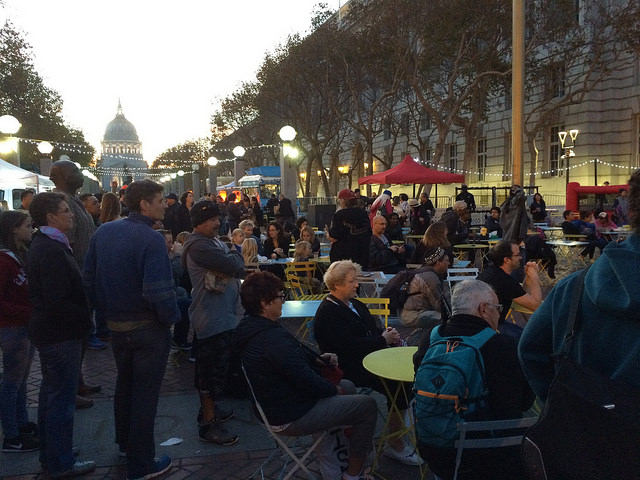
Certainly, the proof that their efforts are working is evident for anyone who's walked through the area over the past few years. Even bigger plans are under way, explained Cohen. They will be rebuilding the Helen Diller Playground in Civic Center Commons, following the model of the recently completed rebuild of the playground in Mission Dolores Park.
Davis said the public can help with the overall effort too, in a very simple way. "The homeless always tell me the worst part is being invisible," said Davis. So when you see the clean up teams in the yellow shirts, he asks people to thank them or "just say 'hi'...we're encouraging folks to approach our team members to empower them and make them feel like they are part of the overall community."

For more events like these, visit SPUR’s events page.
Read More:
Stay in touch
Sign up for our free newsletter
More from Streetsblog San Francisco
Independent Safety Advocates Beef up the Wiggle
Signs and soft-hit posts installed by advocates make the Wiggle bike route calmer and safer for cyclists and pedestrians




